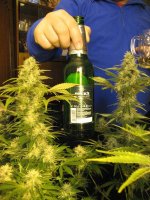gr0wm3
Member
Silversurfer .... elite organic brews my friend, impressive ...... another commercial product that is great in oz is whats called gogo juice and triple boost (both organic enough... hehe whatever that means) ..... the gogo juice has humic but its best properties is that it is full of beneficial live bacteria.... is kelp based..... plants love it ... and the triple boost, well that shit is organic ..... and is great for using as an organic nutrient for cannabis ... the best seaweed concentrate these days in oz is eco-cweed (i think its called eco-cweed.... its powdered and highly concentrated... theyre the same mob that make eco-neem) ....all of which can be purchased from major stores like bunnings ...... probably not much help mentioning this but somebody may gain from what ive mentioned in this psot .... peace n pot








